Submitted by WA Contents
BIG unveils Gelephu Mindfulness City masterplan informed by Bhutanese culture
Bhutan Architecture News - Dec 21, 2023 - 16:52 14085 views
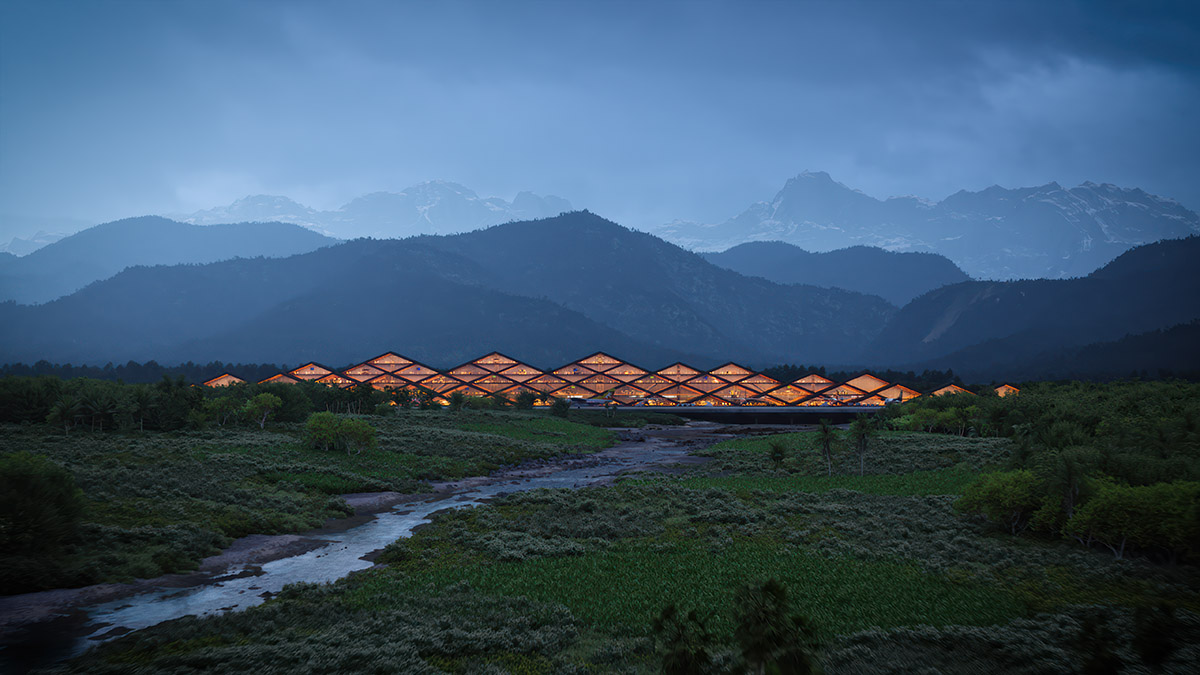
BIG has unveiled a masterplan for Bhutan, the world’s first carbon-negative country, which is informed by Bhutanese culture and the principles of Gross National Happiness index (GNH), and the country’s strong spiritual heritage.
Called Gelephu Mindfulness City, the 1,000-square-kilometre development is located in the town of Gelephu in Southern Bhutan. The new masterplan is being designed by BIG, together with collaborators Arup, and Cistri.
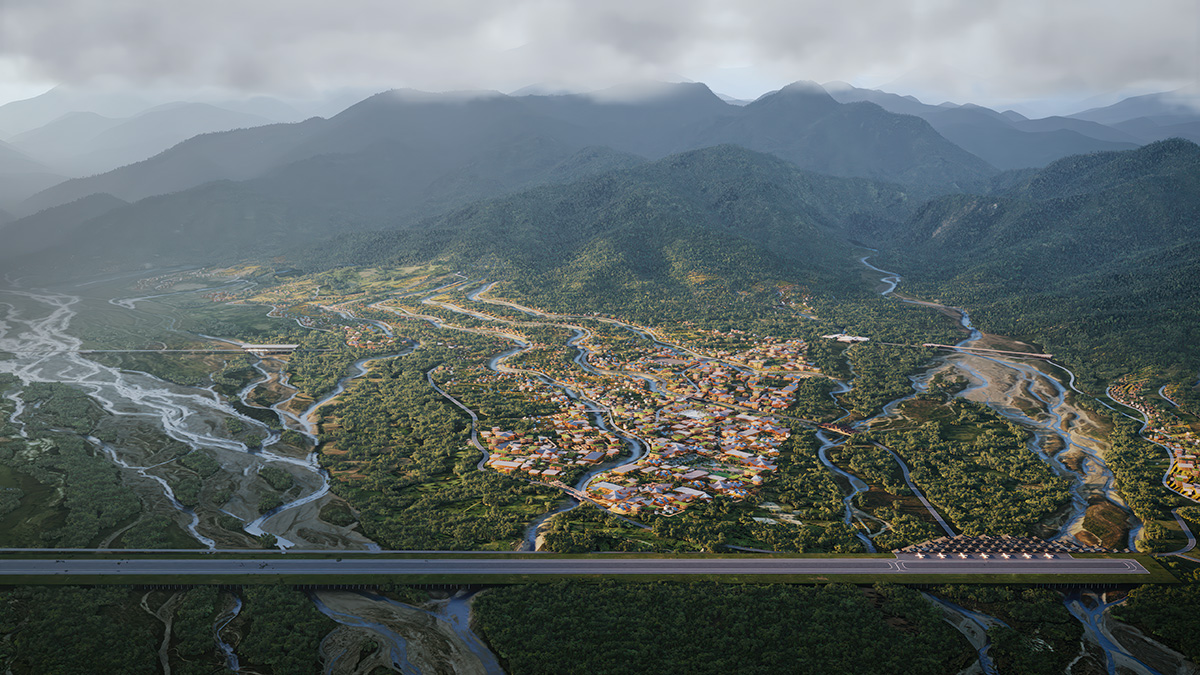
Aerial Mountain. Image © Brick Visual
BIG's new development is aimed at contributing to the country’s future growth and creating economic opportunities for its citizens through investments in green technology, education, and infrastructure.
The program of the new development consists of a new airport, a healthcare center, a university, a hydroponic and aquaponic greenhouse, a cultural center, and a market.
The future Gelephu Special Administration Region, located on the India-Bhutan border, is expected to leverage its location and connectivity to South-and Southeast Asia.
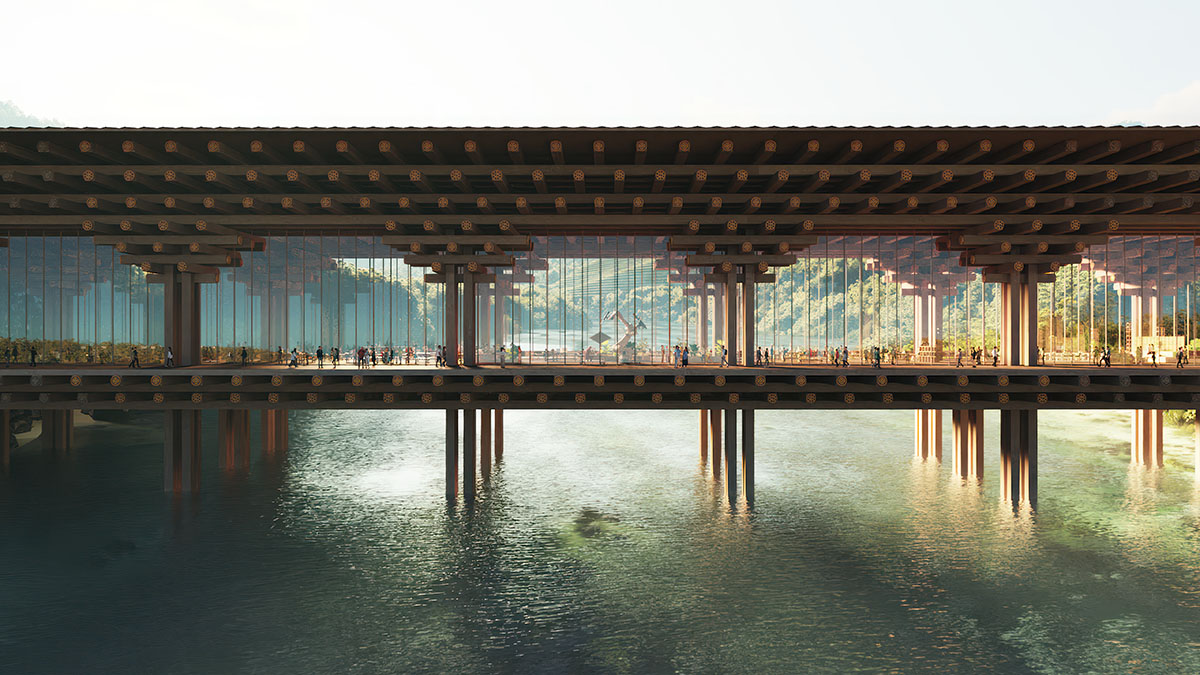
Craft bridge exterior. Image © Brick Visual
Designed by BIG’s Landscape and Urban Design Team, the masterplan includes a new international airport, railway connections, a hydroelectric dam, public spaces, and a language for local building typologies.
The new typologies are based on the nine domains of GNH: Psychological Wellbeing, Health, Education, Living Standards, Time-Use, Ecological Diversity and Resilience, Good Governance, Cultural Diversity and Resilience, and Community Vitality, according to BIG.
"Nestled between mountains, forests, and rivers, Bhutan stands as one of the last biodiversity hotspots in the world, with 70 per cent of the country covered in forest," BIG said.
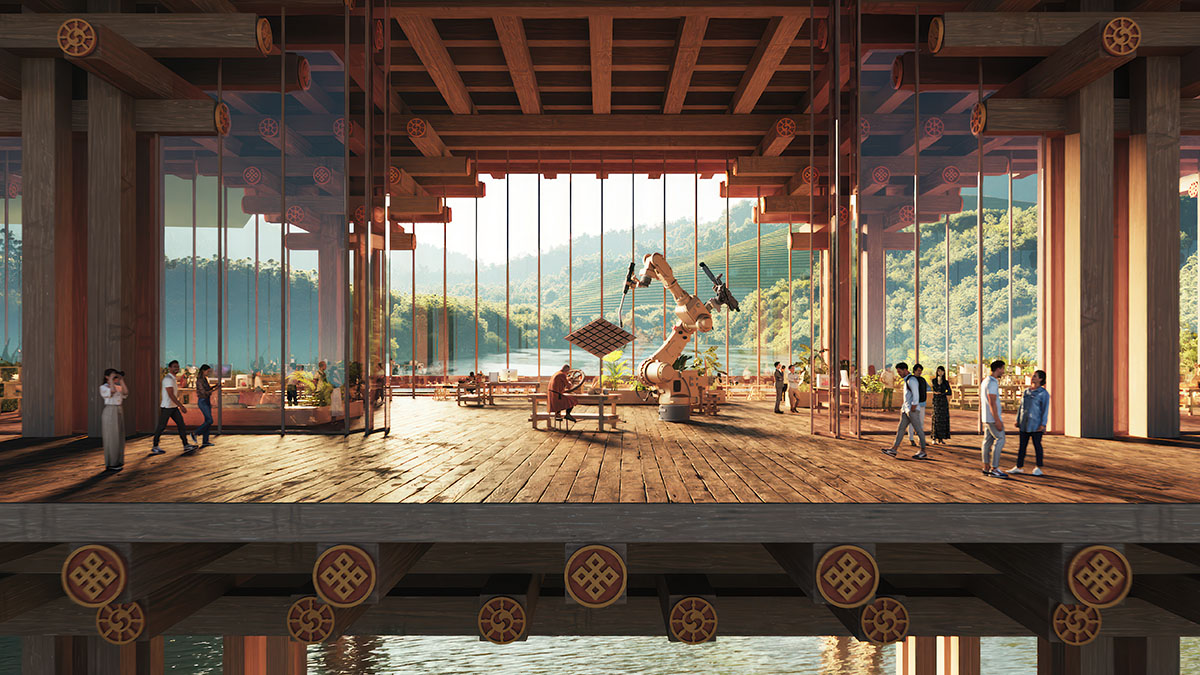
Craft bridge interior. Image © Brick Visual
With the Mindfulness City masterplan, BIG aims to amplify the country’s abundant biodiversity by emerging as a vibrant tapestry of interconnected ecosystems and lively neighborhoods shaped by the flow of the 35 rivers and streams that run through the site.
Creating ribbonlike neighborhoods that resemble paddy fields, they form urban terraces that cascade down from the hills to the valley.
The city increases in density from the rural and recreational highlands to the urban and dense lowlands.

Vajrayana bridge exterior. Image © Brick Visual
"A place that could be nowhere else"
"The Gelephu Masterplan gives form to His Majesty’s vision to create a city that becomes a cradle for growth and innovation while remaining founded on Bhutanese nature and culture. We imagine the Mindfulness City as a place that could be nowhere else," said Bjarke Ingels, Founder and Creative Director, BIG – Bjarke Ingels Group.
"Where nature is enhanced, agriculture is integrated, and tradition is living and breathing, not only preserved but also evolved. Shaped by waterways, Gelephu becomes a land of bridges, connecting nature and people, past and future, local and global."
"Like the traditional Dzongs, these inhabitable bridges turn into cultural landmarks, doubling as transportation infrastructure combined with civic facilities."
"Among these, the Sankosh Temple-Dam embeds the city’s fundamental values into a cascading landscape of steps and landings, that like a 21st century Tigers Nest will be a manmade monument to the divine possibility of a sustainable human presence on earth," Ingels added.
"Turning engineering into art and turning the forces of nature into power," he added.

Aerial town. Image © Brick Visual
The team preserves natural elements and the existing infrastructure, agriculture, and utilities of Gelephu to naturally create 11 distinct neighborhoods across the 1,000-square-kilometre area.
The basic Mandala principles inform each of the 11 neighborhoods, which are defined by a series of repeating typologies organized symmetrically around a central public space.
Through these neighborhoods, a gradual transition in density is created - from small buildings dispersed in the landscape in the north to larger footprints within an urban environment in the south.

Airport interior. Image © Brick Visual
To resist against flooding in the monsoon season and protect existing and future development, the BIG team creates paddy fields along the site’s rivers and tributaries, running from north to south.
"These will further function as biodiversity corridors for local flora and fauna, leaving the migratory routes of elephants and other wildlife undisturbed," said the firm.
"Inspired by the Bhutanese culture of respect and compassion for others and nature, the Mindfulness City is designed to enhance ecological systems, through an urban development that connects flora and fauna, as well as people and ideas," said Giulia Frittoli, Partner in Charge, BIG Landscape, BIG – Bjarke Ingels Group.
"It becomes a testament of humanity's inseparable bond with nature, and a global example of how to build a sustainable human presence on Earth," Frittoli added.
The neighborhoods within the city are divided by rivers and tied together by three main mobility connections.
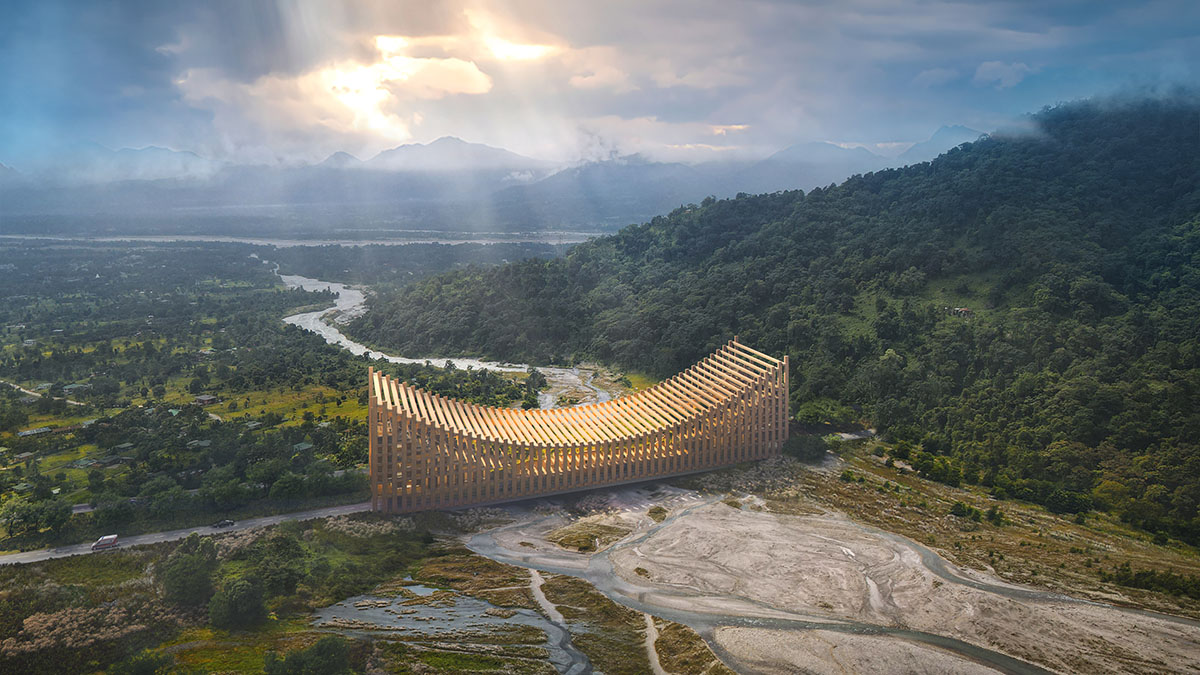
Healthcare exterior. Image © ATCHAIN
BIG said that "occasionally, these double as transportation infrastructure combined with civic and cultural facilities, creating a series of ‘inhabitable bridges’ which are tailored to each of the nine Gross National Happiness domains."
Each of the bridges will house key destinations within the city: the new airport - a Vajrayana spiritual center which allows glimpses into the daily practices of the monks and masters of mindfulness.
Another facility will be a healthcare center as a meeting between Eastern and Western medicine. In addition, there will be a university that exposes its academic activities.
Besides, it will feature a hydroponic and aquaponic greenhouse putting ancient farming practices and modern agro-science on display for the daily commuters.

Market interior. Image © Brick Visual
Another facilities will be a cultural center to immerse and educate visitors about Bhutanese culture and customs and a market adorned with Bhutanese textiles.
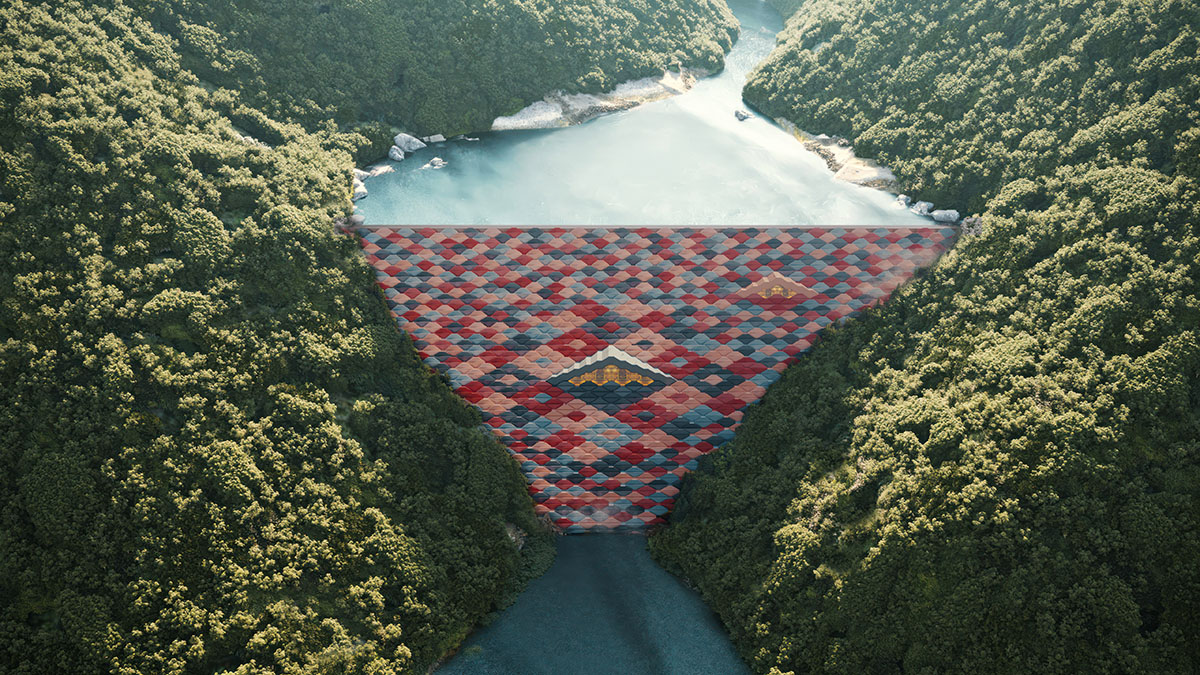
Dam exterior far. Image © Brick Visual
The final bridge will house a hydroelectric dam, will be constructed on the city’s western border with a step-well retaining wall that offers viewpoints, staircases for meditative walks, and a temple.
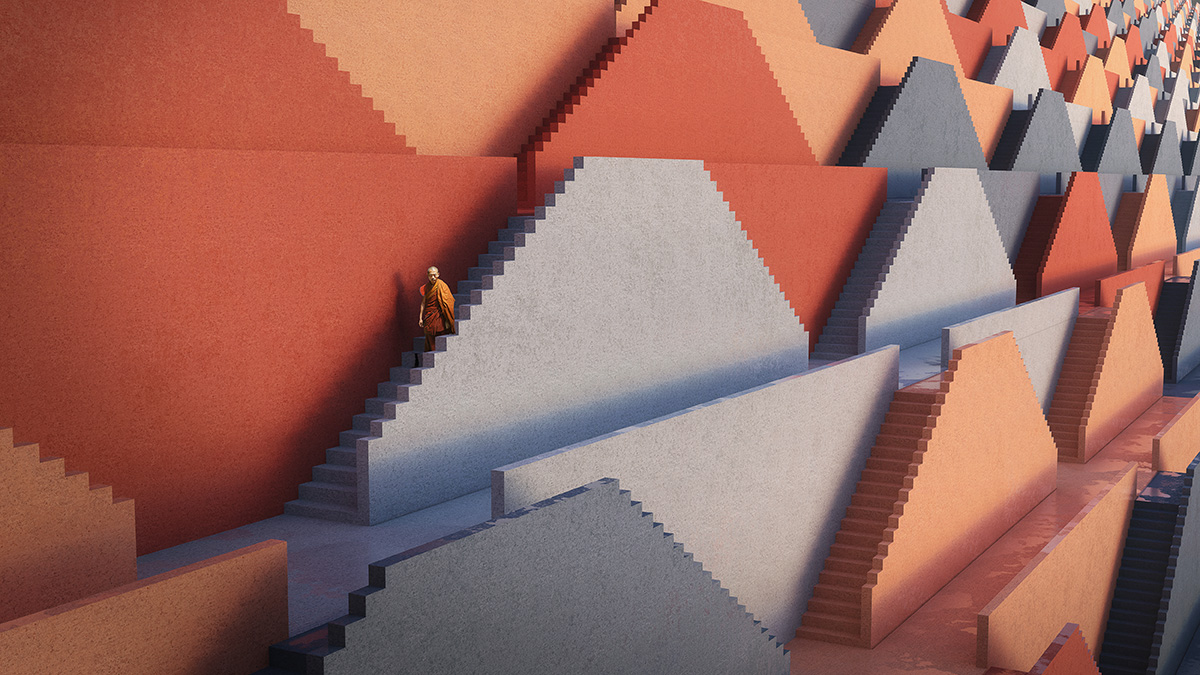
Dam stairs. Image © BIG
Visitors and pilgrims can ascend and descend along countless individual routes to the visitor center and temple nested on the face of the manmade cliff.
Dubbed Sankosh Temple-Dam, the dam adopts all the foundational elements of Gelephu in architectural form, referencing to the harmonious coexistence of culture and nature, conceived as a hybrid child of Bhutan’s rich past heritage and its prosperous future legacy.
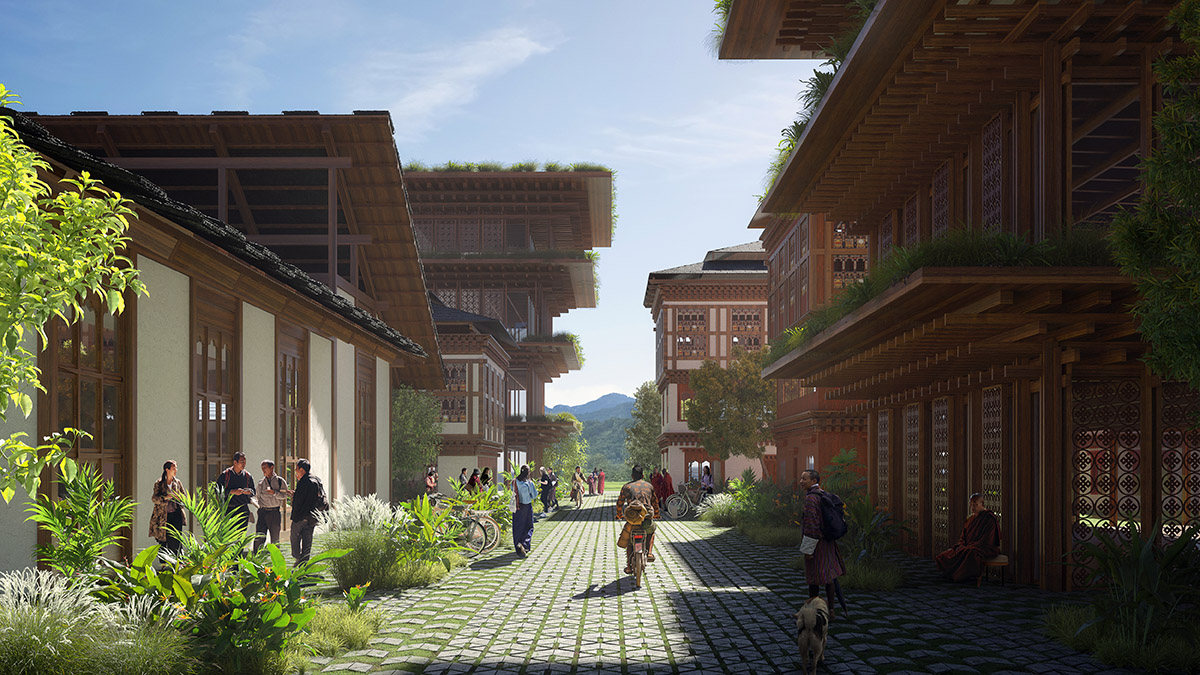
Streetscape. Image © BIG
The development incorporates intimate streets, paved with permeable pavers provide resilience by allowing stormwater to seep into the ground rather than the sewage system.
BIG will use local materials such as wood, stone, and bamboo in the new buildings, inspired by vernacular motifs such as rabsel, cornices, ornaments, and roofscapes.

Dam close up. Image © Brick Visual
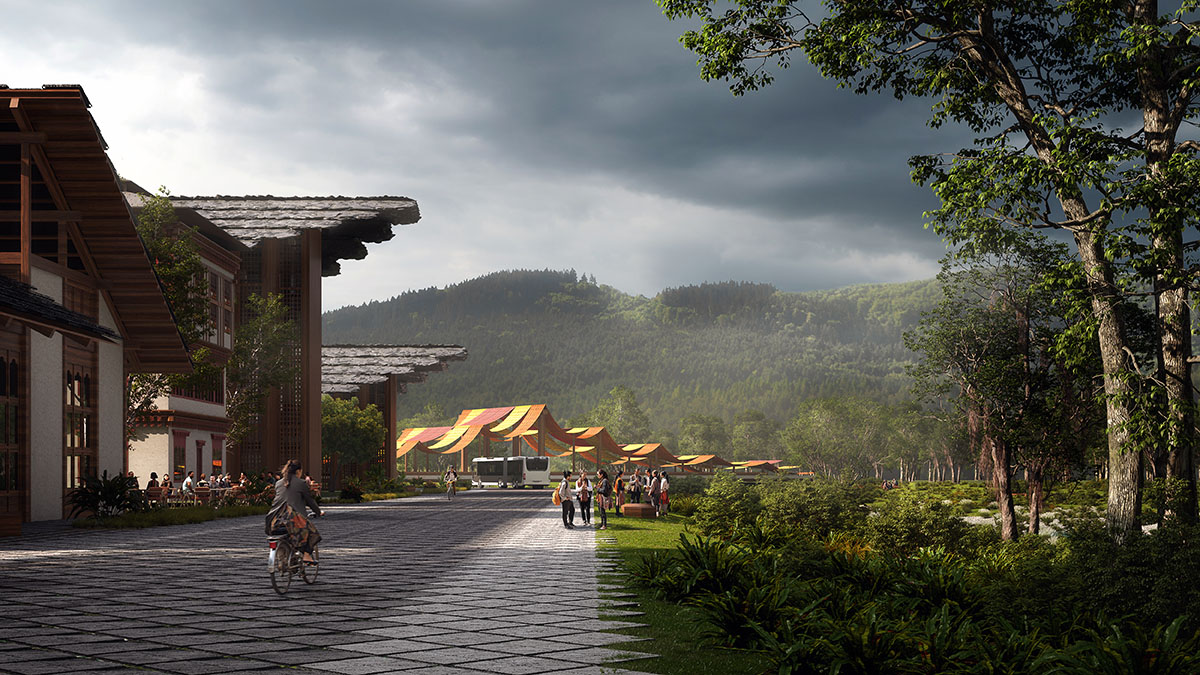
Public transportation corridor. Image © BIG
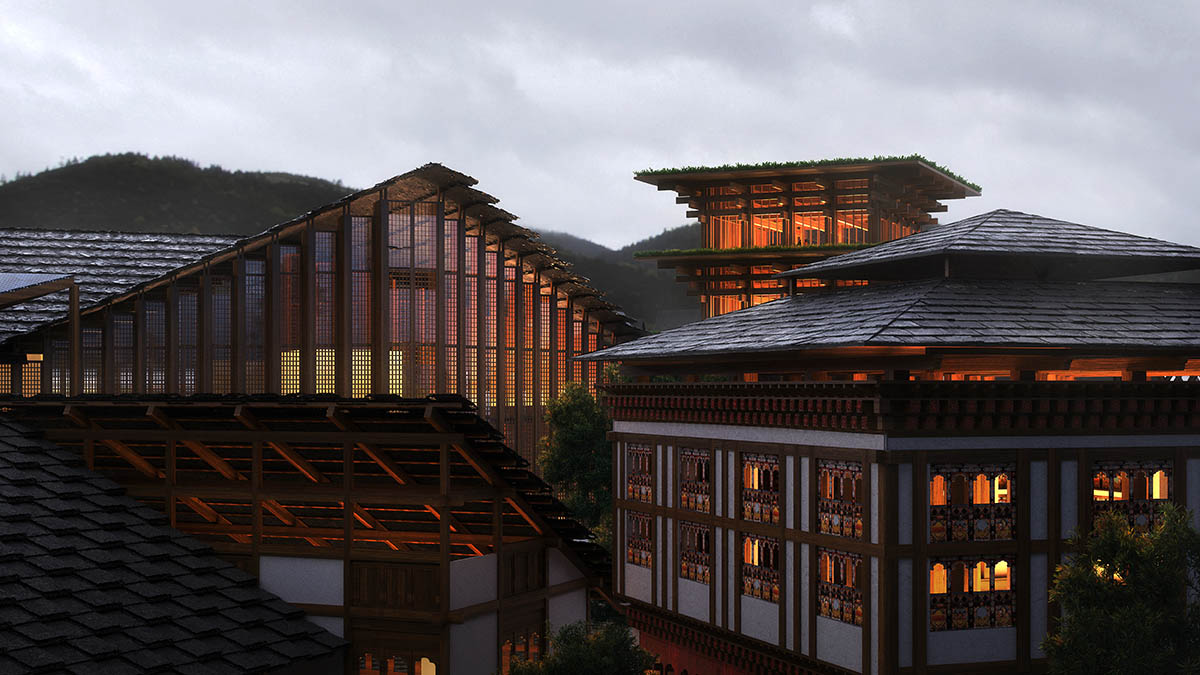
Roofscape. Image © BIG
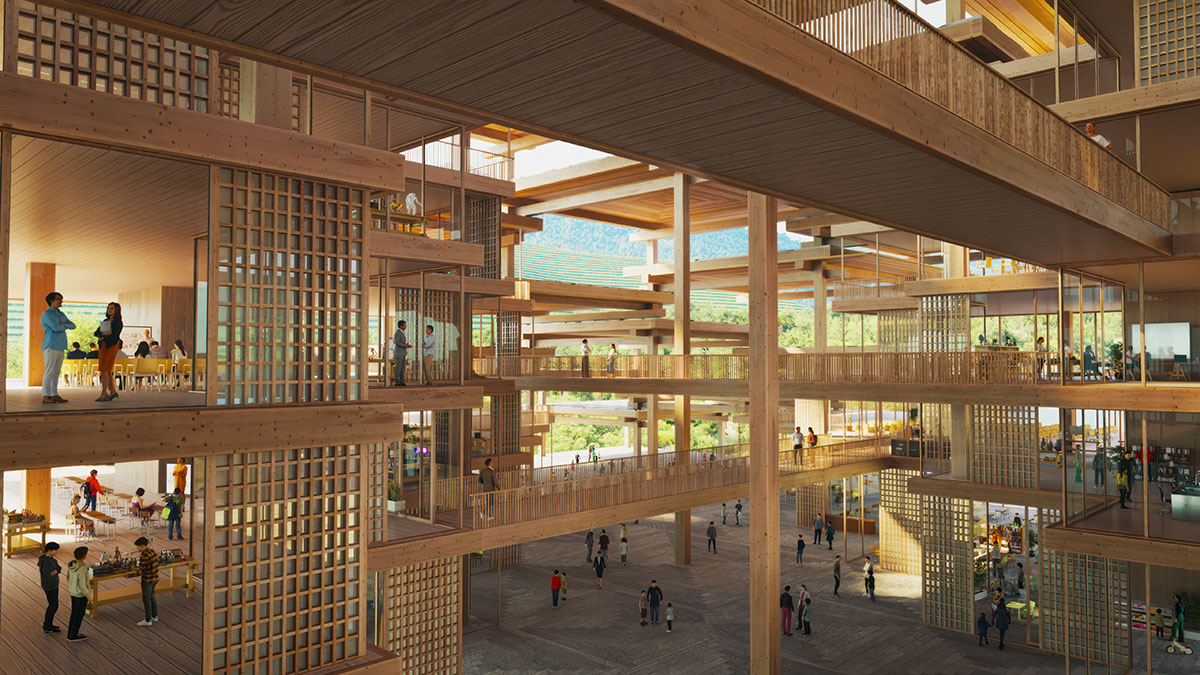
University interior. Image © Brick Visual
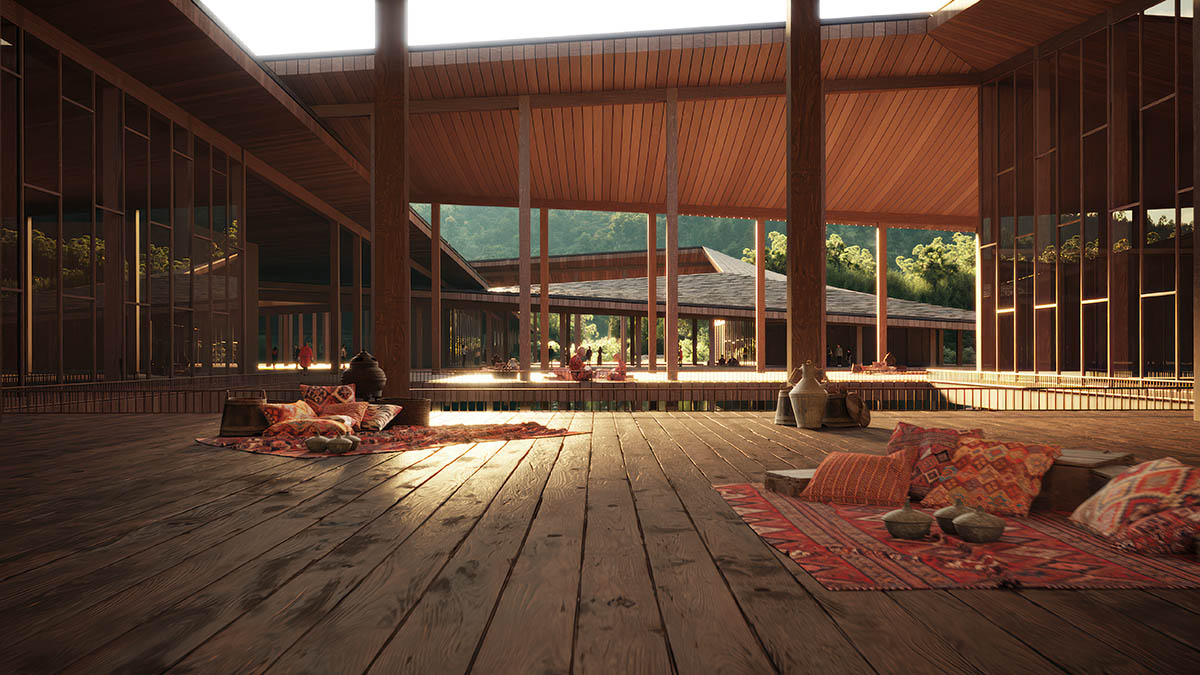
Vajrayana Center interior. Image © Brick Visual
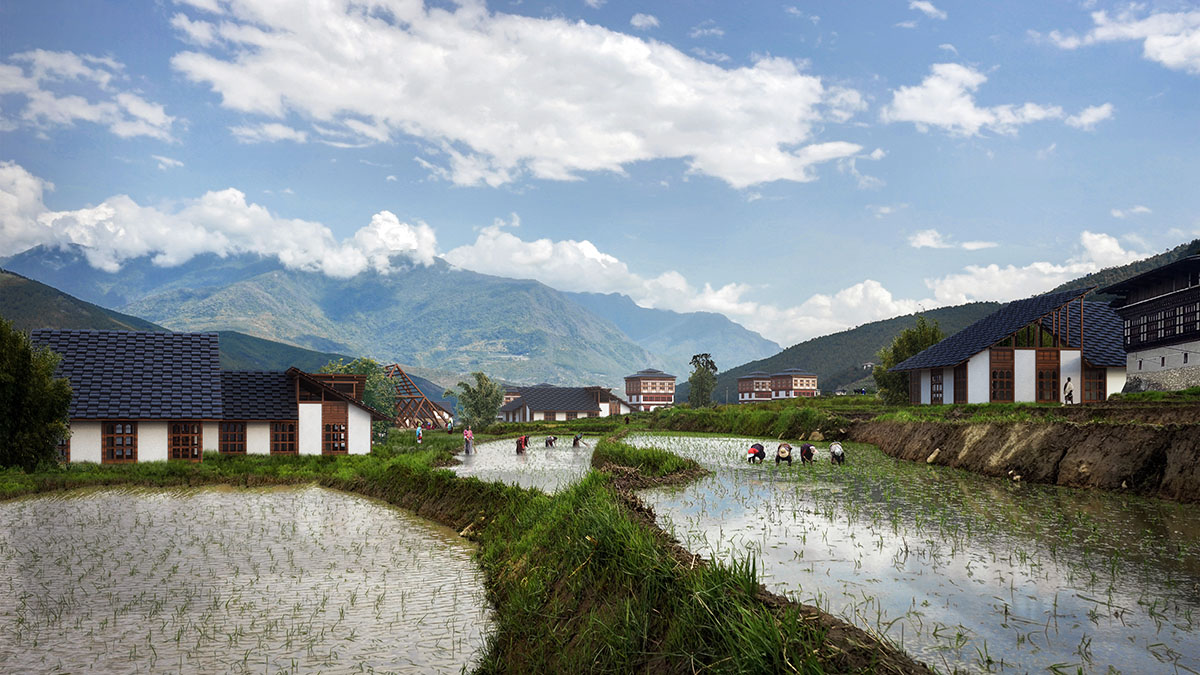
Village. Image © BIG
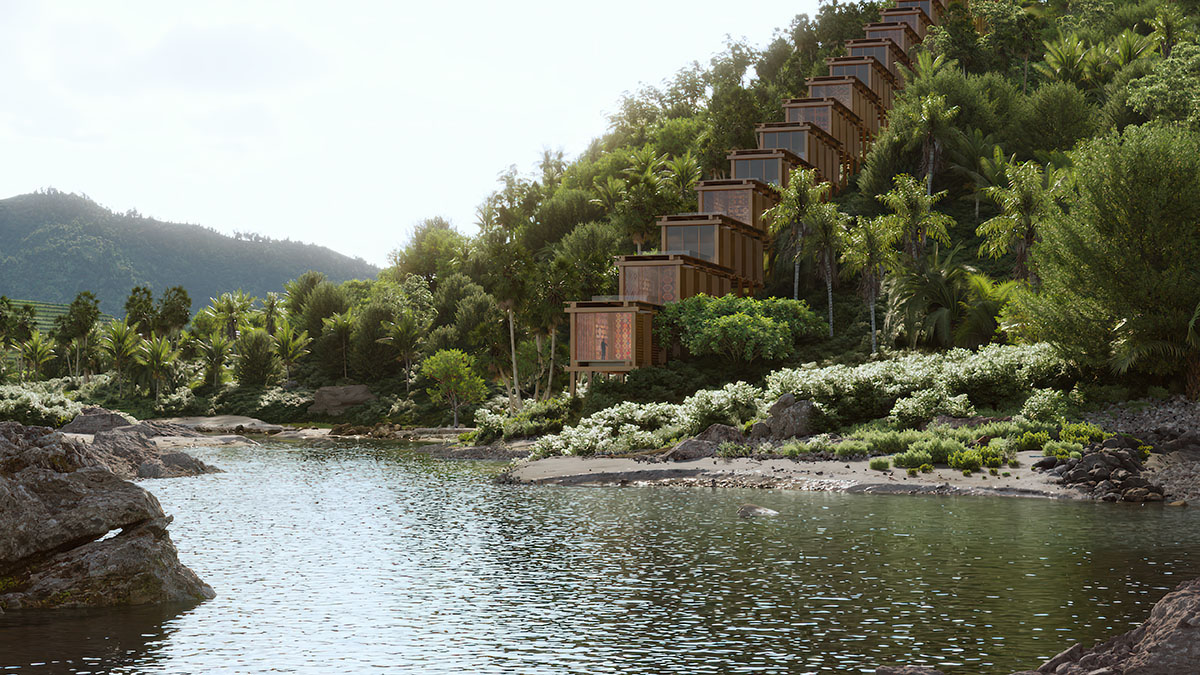
Wellness Center. Image © Brick Visual
Animation © Squint/Opera & Brick Visual

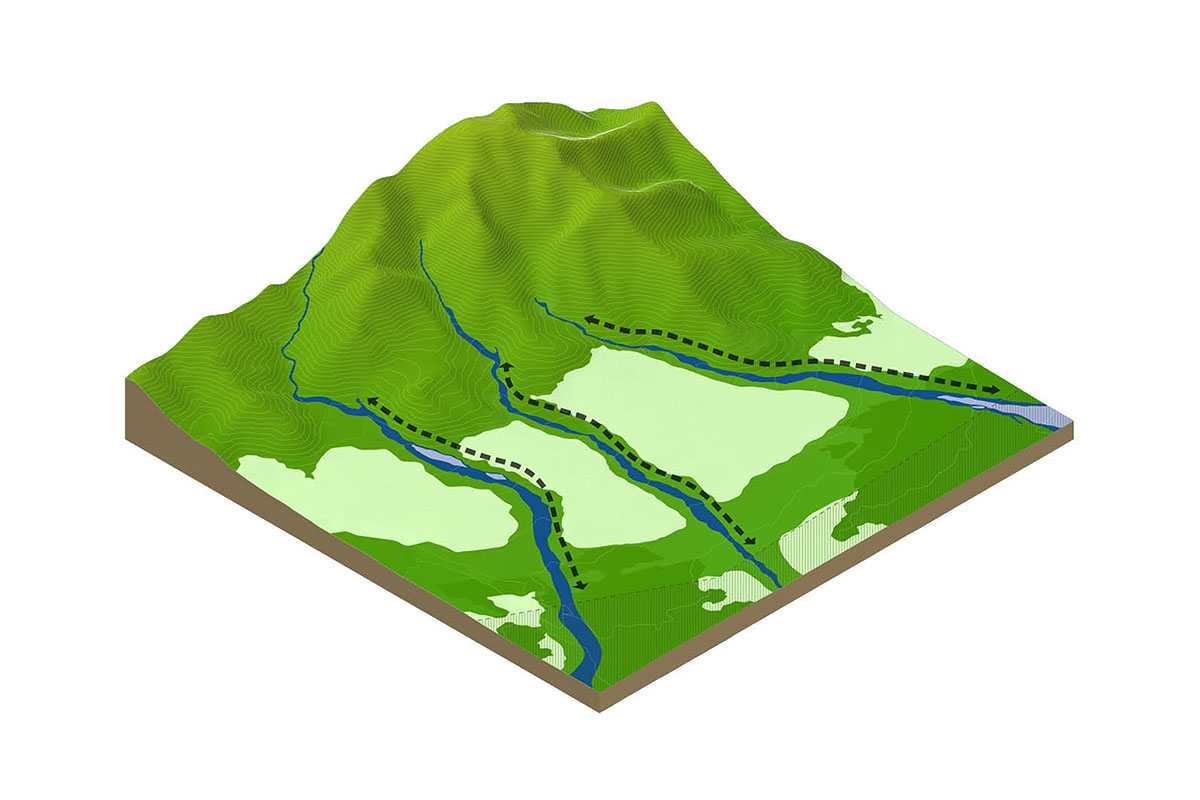
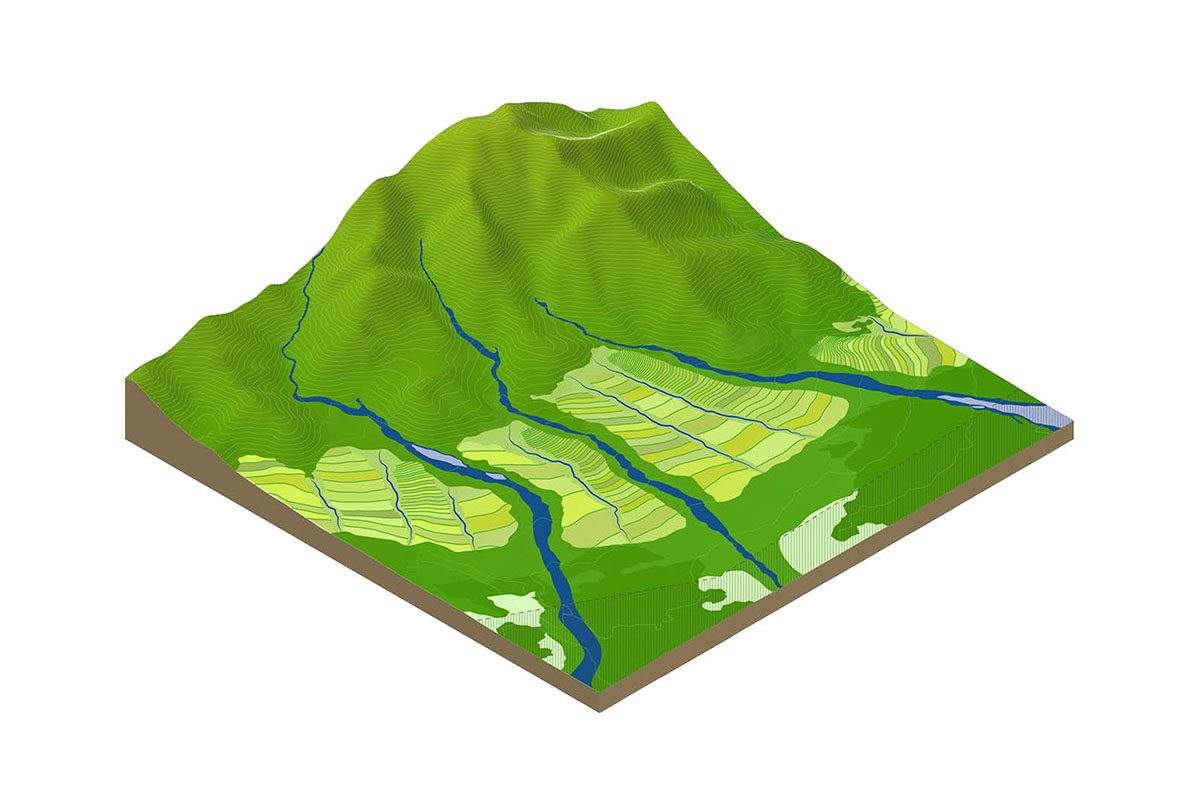
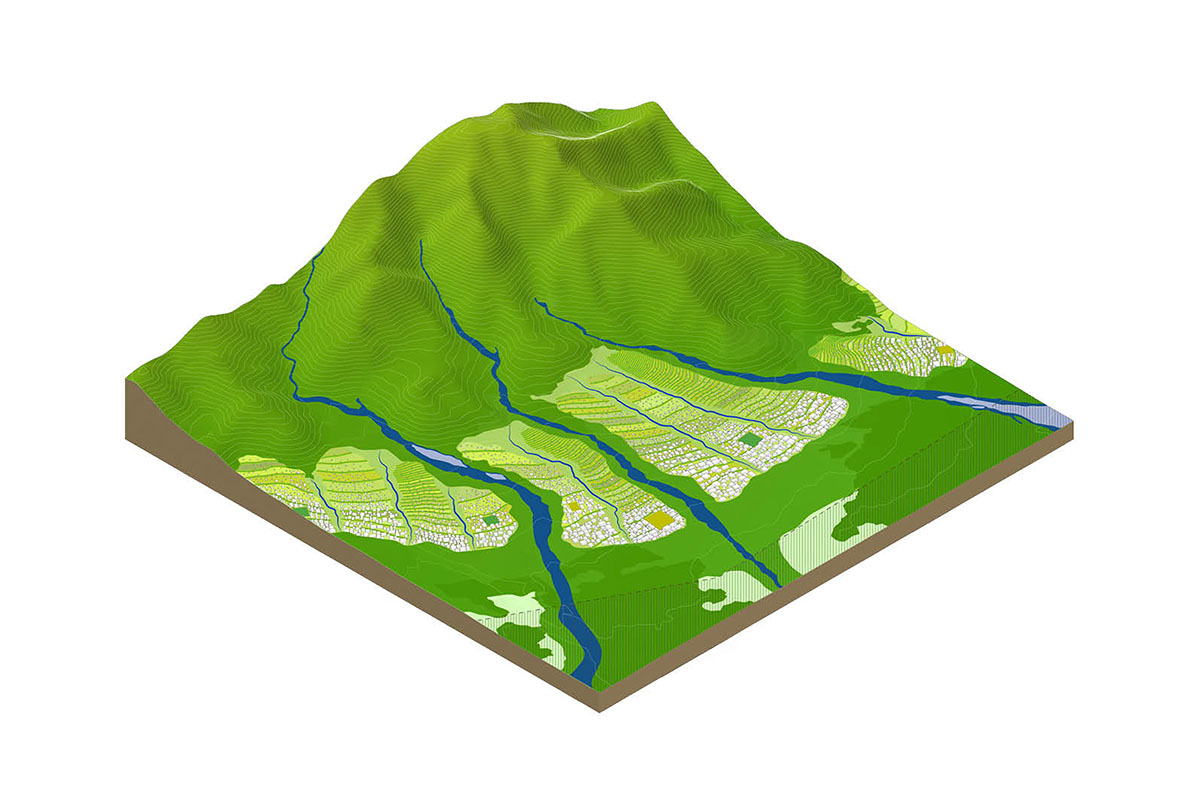
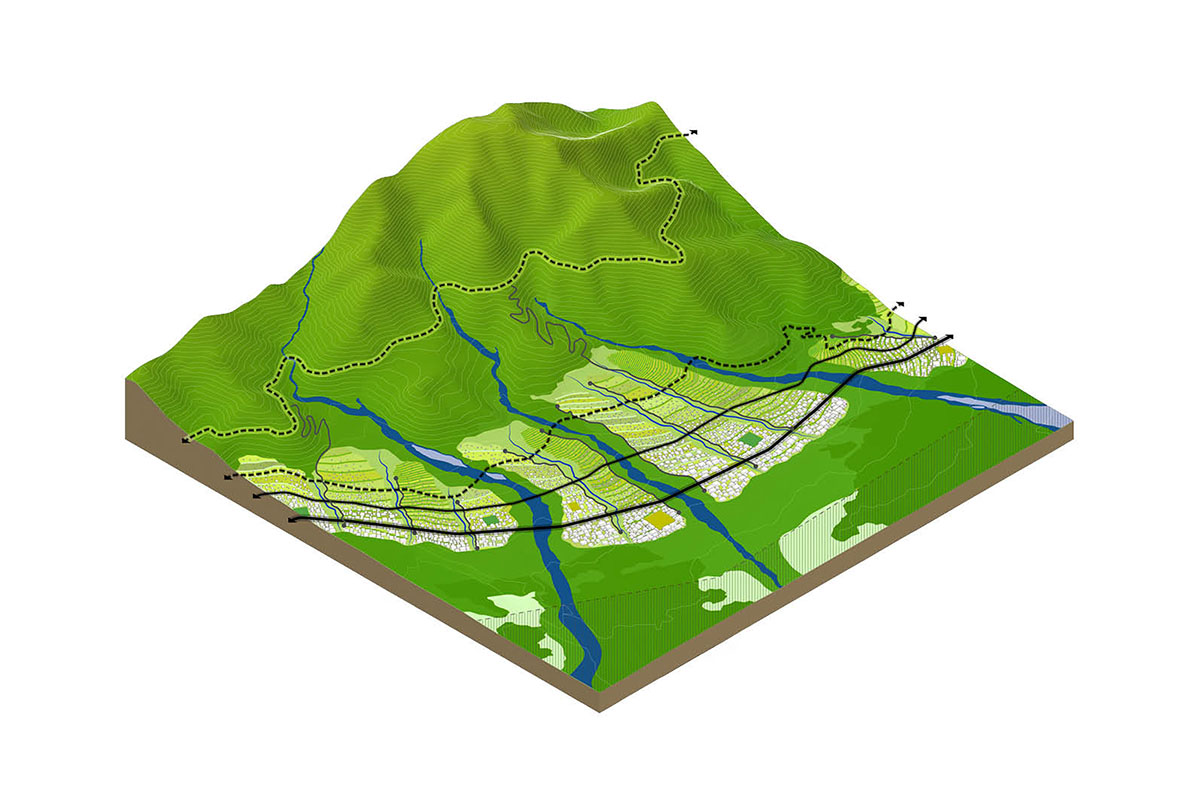
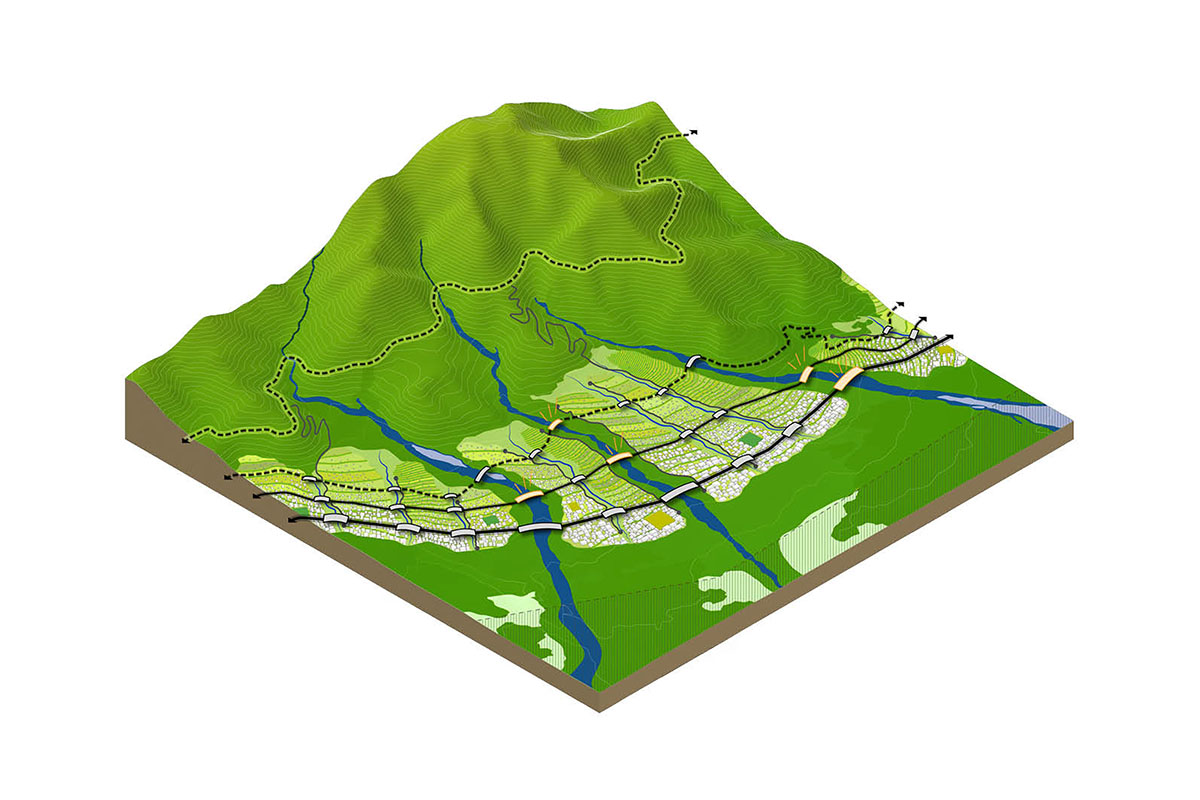
BIG completed a new skyscraper in New York City, which marks BIG's first completed supertall, and first completed commercial high-rise in New York. The firm released first renderings for a new whiskey distillery and headquarters for Blue Run Spirits, a Kentucky-based company and creator of award-winning bourbons and rye whiskies.
Project facts
Name: Gelephu Mindfulness City
Size: 1000+ km2
Location: Gelephu, The Kingdom of Bhutan
Client: The Kingdom of Bhutan
Collaborators: Arup, Cistri
Project team
Partners-in-Charge: Bjarke Ingels, Giulia Frittoli
Project Manager: Nanna Gyldholm Møller
Design Lead: Dace Gurecka
Team: Anastasiia Golub, Filip Radu, Giancarlo Albarello Herrera, Krisha Arunkumar, Marius Tromholt-Richter, Matthew Goodwill, Monika Dauksaite, Sophie Høg, Xian Chen, Xu Lian
Top image in the article: Airport Exterior © Brick Visual.
Renderings © Brick Visual, Atchain, BIG.
Animation © Squint/Opera & Brick Visual.
All drawings © BIG.
> via BIG
